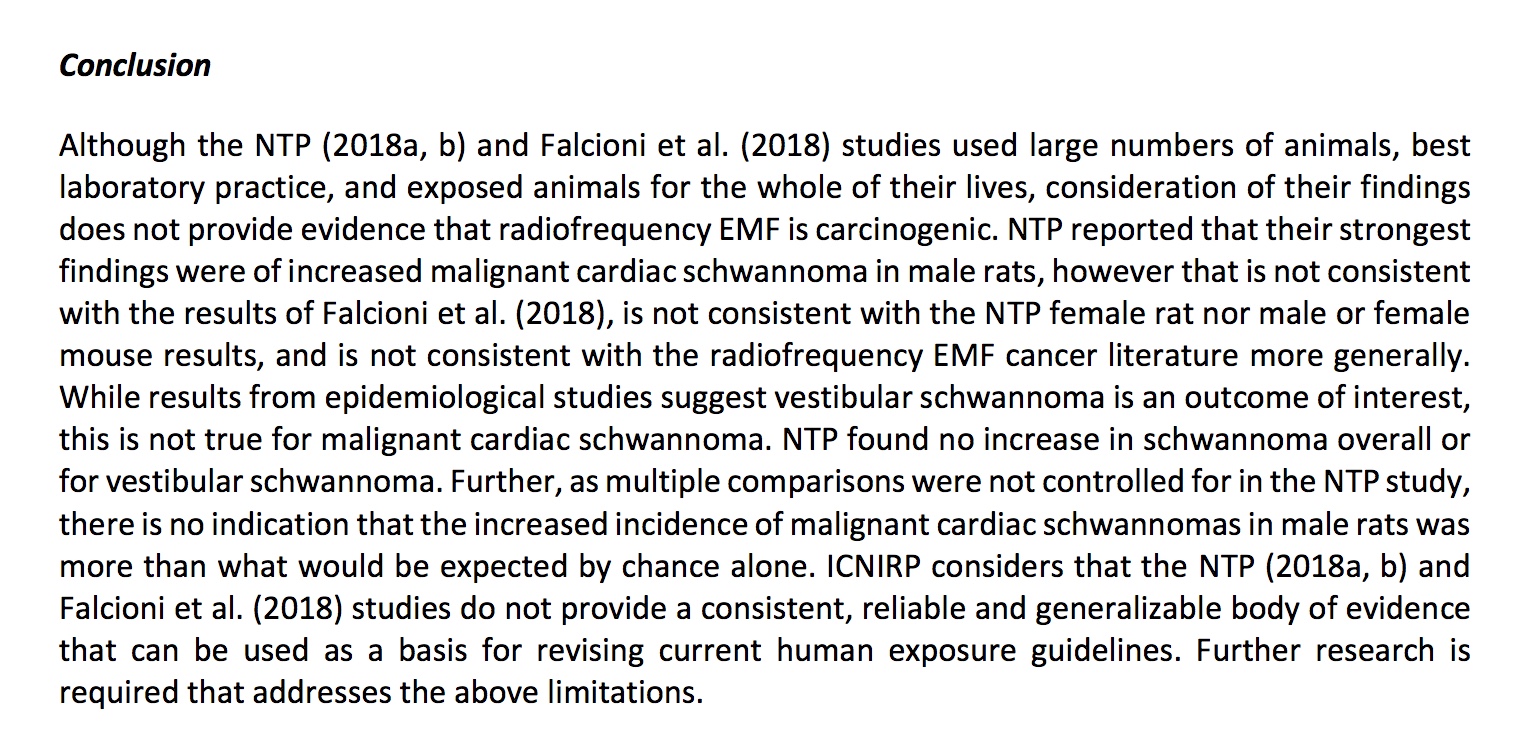The International Commission on Non-Ionizing Radiation Protection (ICNIRP) has found that the two new animal studies pointing to a cancer risk from cell phones are not convincing and should not be used to revise current exposure standards.
In a “Note” published today, the 12-member group stated that the studies by the National Toxicology Program (NTP) and the Ramazzini Inistitute “do not provide a consistent, reliable and generalizable body of evidence.” “Both studies have inconsistencies and limitations that affect the usefulness of their results for setting exposure guidelines,” according to ICNIRP.
In contrast, a peer review panel of toxicologists recently found that the NTP study showed “clear evidence” of RF carcinogenicity.
The current ICNIRP limits were set 20 years ago and are based only on acute effects. Two months ago, ICNIRP issued revised draft guidelines for public comment which are largely unchanged and also discount cancer risks.
Here are the conclusions of the eight-page note, which was released today:

(L. Falcioni is the first author of the Ramazzini study.)
For more on the NTP study: go here and here.
And for more on the Ramazzini study, go here and here.
https://microwavenews.com/short-takes-archive/icnirp-ntp-ri
Spread the word:
- Click to share on Facebook (Opens in new window) Facebook
- Click to share on X (Opens in new window) X
- Click to share on WhatsApp (Opens in new window) WhatsApp
- Click to share on LinkedIn (Opens in new window) LinkedIn
- Click to share on Pinterest (Opens in new window) Pinterest
- Click to share on Reddit (Opens in new window) Reddit
- Click to share on Tumblr (Opens in new window) Tumblr
- Click to share on Telegram (Opens in new window) Telegram
- Click to print (Opens in new window) Print

